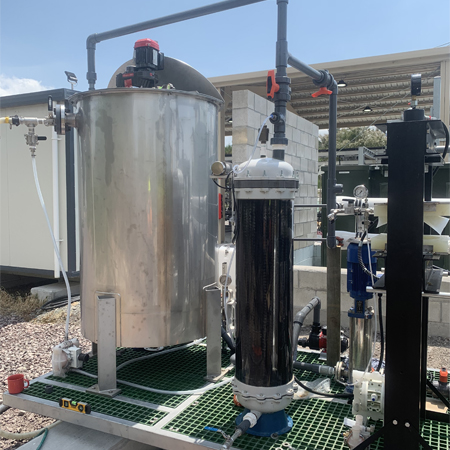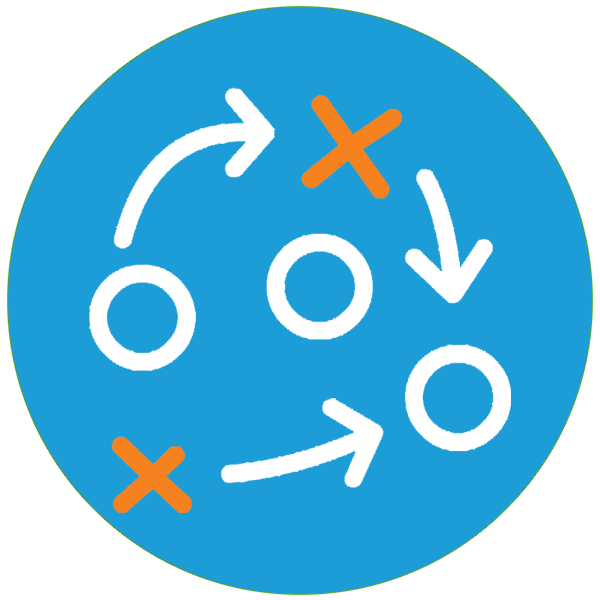“I believe that Geo40 lead the market in cost-effective recovery of lithium from low to moderate grade brines, which coupled with the wide range of brine chemistries they have trialled makes them a very serious contender in the sector indeed.”
- Mike Gunn, Gunn Metallurgy
Since 2018, we have made considerable progress in developing technology to source lithium from subterranean fluids. We call it sustainable direct lithium recovery.
Demand for sources of low-carbon, genuinely sustainable lithium for the electric transport revolution will likely continue for many years. We’ve developed innovative technology to selectively recover lithium from underground fluids, including Geothermal, Oilfield and Salar type brines.
The Imperative for Sustainable Direct Lithium Recovery
Lithium is currently extracted almost entirely through hard-rock mining or evaporation from salt lakes (or salars). Both techniques are widely seen as being environmentally impactful, and there is a strong imperative for sustainable direct lithium recovery technologies.
Salar evaporation

Lithium is sourced from salars, typically located from the Lithium Triangle in Argentina, Bolivia and Chile.
Subsurface fluids are placed into large evaporation ponds to produce a concentrate, which is typically refined in China.
Hard rock lithium mining

Lithium is commonly sourced from spodumene, a lithium mineral derived from pegmatite rock. Li2O concentrations typically vary between 1 – 8%.
The process involves excavation, crushing and extraction of a lithium concentrate, which is typically then refined in China.
Typical direct lithium extraction

Direct lithium extraction is the process of recovering lithium from subsurface fluids through a direct physical or chemical process.
It is best practice to reinject the fluids back underground once the lithium has been recovered.
Our Lithium Recovery Process
Target Markets
Lithium concentrations in the geothermal fluids used to generate geothermal power are generally low. Few if any existing technologies can recover lithium from the silica-rich fluids at these sites.
Our mature silica-recovery technology makes us uniquely able to target lithium alongside geothermal power generators. Removal of colloidal silica is highly valued by geothermal power generators as this eliminates costly scaling of reinjection pipes and wells and enables further value capture through utilisation of waste heat. Click here to learn more. The presence of existing production and reinjection wells and other site infrastructure (power and water supplies) makes this an attractive proposition.
To be relevant at geothermal power generation sites, we need to develop a direct lithium extraction (DLE) technology with the highest possible recovery rate. Our initial lab-scale work was undertaken at Ohaaki geothermal field in New Zealand where the lithium concentration was 10ppm. Our technology proved successful, with a 90% recovery rate.
Going global
We have successfully recovered lithium from the following six brine types:
- European low grade brine
- European moderate grade brine
- USA moderate grade oil-field brine
- Argentinian Salar high grade brine
- Argentinian Salar very high grade tailings brine
- New Zealand very low grade geothermal brine
Through 2023 we will process progressively larger quantities of different fluids through our New Zealand-based Pilot Plant. This will pave the way for deployment at a larger Demonstration Plant scale on attractive resources in late 2023 and into 2024.

Strategic Advantage
Our history working in geothermal fluids has led us to develop technology that can recover lithium even when present at very low grades. Our New Zealand home brine can be as low as 7ppm lithium, and our net efficiency (meaning how efficiently we can produce lithium chloride) is high, ranging from 81% to over 90% depending on the brine type. We’ve taken this route deliberately, as it permits us the flexibility to work in the widest possible range of locations.
Brines found in the USA, Canada and Europe are typically characterised as low to moderate grade. Our technology is particularly relevant in these brine types, where we believe we have few competitors.
Feedback on our process
“I have been engaged by Geo40 since January 2022 to observe and review the development of their direct lithium recovery technology.
“Their approach, using a mineral sorbent, broadly follows the logic of the CIP process developed for low-grade gold deposit recovery in the 1980’s, however this approach is not without its challenges.
“Much as Geo40 has done at scale with silica recovery, they have cleverly deployed their knowledge and intellectual property to successfully deal with the key solid-liquid separation process steps, and Geo40’s in-house team of chemists, engineers and metallurgists are well placed to deploy their technology at scale in the very near future.
“Their second pilot plant, which has now been running successfully for 12 weeks, has demonstrated to me that they have a very compelling DLE process, and I believe they lead the market in cost-effective recovery of lithium from low to moderate grade brines, which coupled with the wide range of brine chemistries they have trialled makes them a very serious contender in the sector indeed.”
Mike Gunn, Gunn Metallurgy, November 2022.
Next steps
As we succeed with lithium recovery at pilot scale, we will do exactly what we did on our silica journey; progressively scale up towards commercial production.
The difference with lithium, in a world desperate for sustainable sources to fuel the electric mobility revolution, is the imperative to move rapidly. We are now talking to potential partners about deployment at pace.








